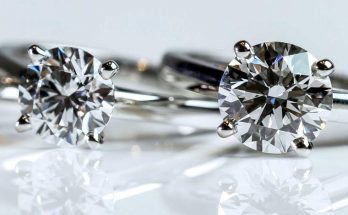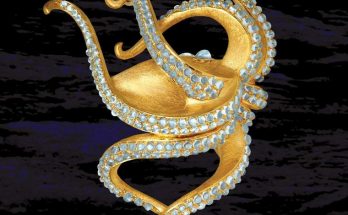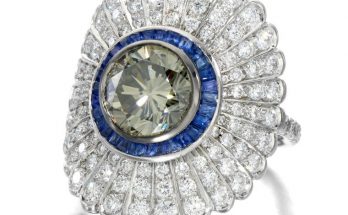Emerald-cuts have big stepped surfaces which can highlight even the most minor flaws in the diamond’s structure. Whether you are are buying a loose diamond in person or via the Internet, you need to examine the stone under magnification in neutral lighting. As much as possible, I recommend inspecting the diamond from as many tilt angles as possible.
A shortcut to skipping this step is to select a stone with higher clarity grading. For those who want to shop online for better value, I advice you to stay away from sites like BlueNile where the vendor doesn’t provide you with any information beyond a grading report. Instead, I recommend vendors like James Allen where they feature a HD video and provide magnified images of the diamond.
Here Are Some Examples Showing Why Photographs Are Crucial
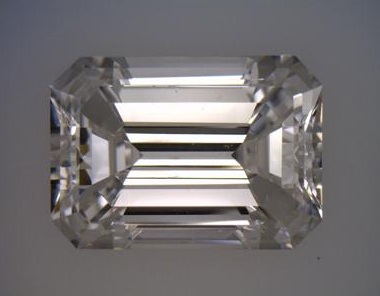
Eye-clean SI1 with scattered inclusions
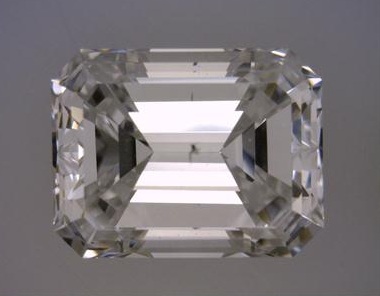
Not eye-clean due to cloud inclusion
Both of these emerald cuts are 1 carat in size and have a clarity grade of SI1. Yet, the type and location of inclusions can seriously affect the appearance of the diamond. I recommend exercising caution when you are considering diamonds of a lower clarity grade.
Pavilion Bulge Can Ruin an Otherwise Attractive Looking Diamond
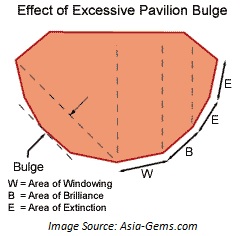 Besides retaining dead weight, an excessive pavilion bulge can also cause problems during the setting process. Here’s the unfortunate thing you need to know.
Besides retaining dead weight, an excessive pavilion bulge can also cause problems during the setting process. Here’s the unfortunate thing you need to know.
Grading reports do not contain any information or details on the presence or degree of pavilion bulging. You need to eyeball the diamond in order to determine that!
However, there are some tell-tale signs you can observe and beware of. Excessive bulge on the pavilion tend to cause windowing and extinction in the diamond’s optical characteristics.
Windowing is usually found in diamonds that are cut too shallow and also manifest when the proportions are all wrong. If you can see through the diamond easily, there is significant windowing and here’s a quick test you can do.
Hold up the loose diamond with a tweezer. With the other hand, run your finger underneath the diamond and look through it. If you can easily make out the fleshy colors of your finger, this means there is a huge amount of light leakage through the diamond.
Extinction on the other hand, refers to the presence of dark areas within the diamond. They are typically found in stones that are cut to high depth percentages and can also occur due to the rounding of the pavilion facets caused by excessive bulge.
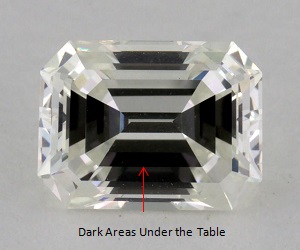
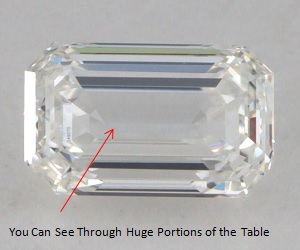
Such diamonds are best avoided for their extreme extinction (left) and windowing (right) effects.
As you can see, there is a high degree of uncertainty when choosing a diamond solely based on numbers shown in a grading report. You really need videos to help you see and visualize the diamonds.
Besides that, James Allen can call in the diamond to their premises to perform an ASET analysis and provide a gemological report for free. Shopping online also enables you to make rational choices away from the pressure selling and hassling in a brick and mortar store.
Diamond Color in the Emerald Shape
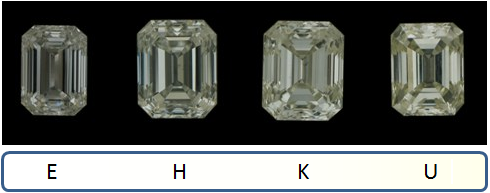
Note: These are the various face-up views of different colors.
Besides clarity related issues, a diamond’s material color tends to show up more in step-cuts. If you are a color sensitive person, you might need to consider a higher color (D-G) to avoid seeing any tinge of yellow in your diamond.
Length to Width Ratio Can Make or Break Appearances
I personally find the most attractive length to width ratios to be within the range of 1.30-1.50:1.00. Emeralds with these l/w ratios tend to showcase the flavor of their shape better.
That said, I need to stress that the preference for a diamond’s outline is entirely up to an individual’s personal choices. Some people might prefer a more squarish look with a L/W ratio in the range of 1.20:1.00 while some others may like their diamonds to look slightly longer.
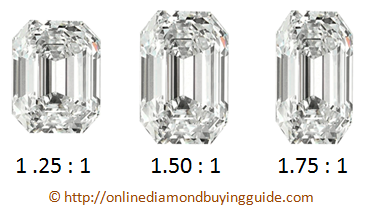
Here’s a Quick Tip For You
The more squarish the shape, the more suitable it is for someone with slender and long fingers. Vice versa, the more rectangular the diamond is, the more suitable it is for someone with short and thick fingers.
Don’t “Cut” Corners (Pun Intended), They Do Matter!
If a fancy cut diamond deviates too much from its typical proportions, it can look awkward and may cause problems during the jewelry setting process. Ideally, the 4 corners should be sufficiently large for prongs to secure the stone without being overbearing.
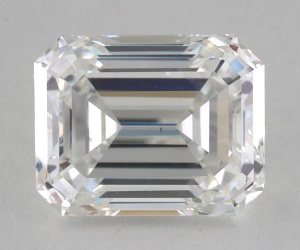
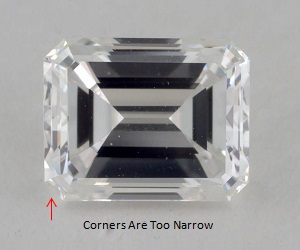
The diamond on the left is a good example of a well proportioned emerald cut while the one on the right isn’t.
Also, you want to double check that the facet edges are neat and parallel to each other from a face-up position. Usually, these variations in symmetry are very obvious and can cause the diamond to detract from their usual look.
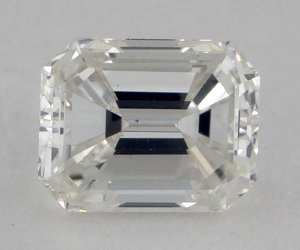
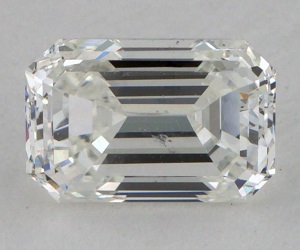
Serious symmetry flaws like these should be avoided.
So far, we covered the factors that you need to avoid when selecting an emerald cut. On the next page, I will show you a step-by-step method that you can use to cherry pick diamonds…
<<
>>
SOURCE:http://beyond4cs.com/shapes/emerald/things-to-take-note-of/

